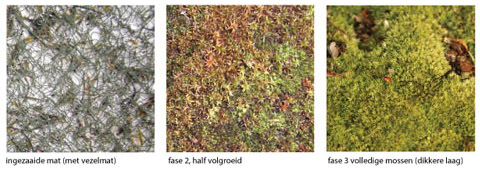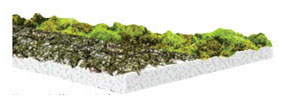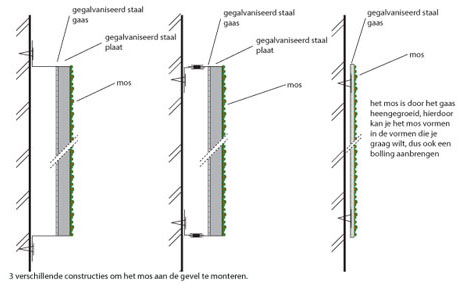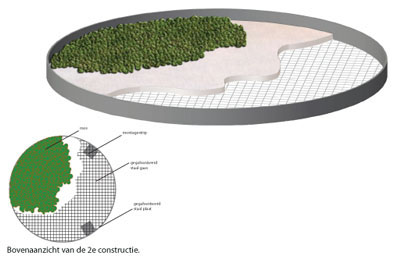Moss was chosen for the covering of the façades. Moss is the best absorber of harmful gases. One of the advantages is that moss has no roots, which means a light, thin mat can be used to coat the buildings. Moss absorbs all kinds of particles and neutralises 75% of them. 50% is absorbed as food and turned into plant mass, 25% is bacterially decomposed and the rest remains between the plants as sediment. Moss gains it's nourishment from the air and rainwater. This means it can grow in any location and doesn't require tending. Moss also retains rainwater, naturally slowing down the drainage of rainwater.
Moss mats have been specially designed to act as a roof covering. With a few minor adaptations, these mats can also be used for the front of buildings. The moss needs no further care.
Different kinds of seeds are sowed on the mats, ensuring that the right kind of moss can grow in any condition.

These are the 3 stages in which the moss mats grow. At the third stage the moss is fully grown. The last stage will be used for projects with a short initial period. For projects with a longer preparation time the first stage can be used. |
The material consists of 3 layers:
 -A non woven PP membrane to slow down water -A non woven PP membrane to slow down water
-A polyamide fibre mat to hold the moss plants
-A layer of specially selected moss seeds(source: Icopal)
Different kinds of seeds are sowed on the mats, ensuring that the right kind of moss can grow in any condition. The color and variety of moss depends on the amount of sunlight and rain.

Green Façade Design will not be attached directly to the original façade, but be placed several centimeters in front of the façade. This way the façade will not be damaged by possible roots of plants.
Three different ways to attach Green Façade Design are depicted above.

|
|